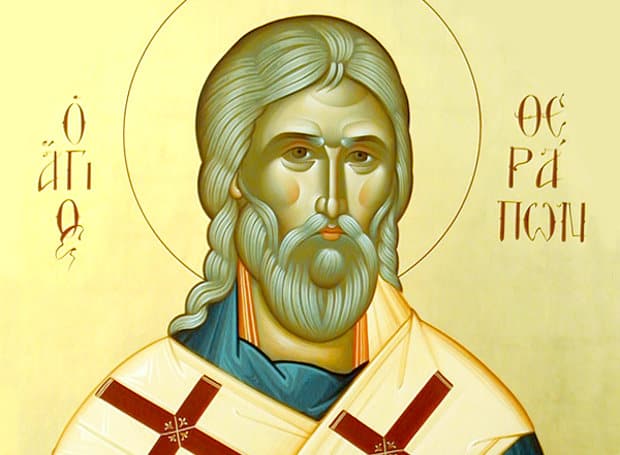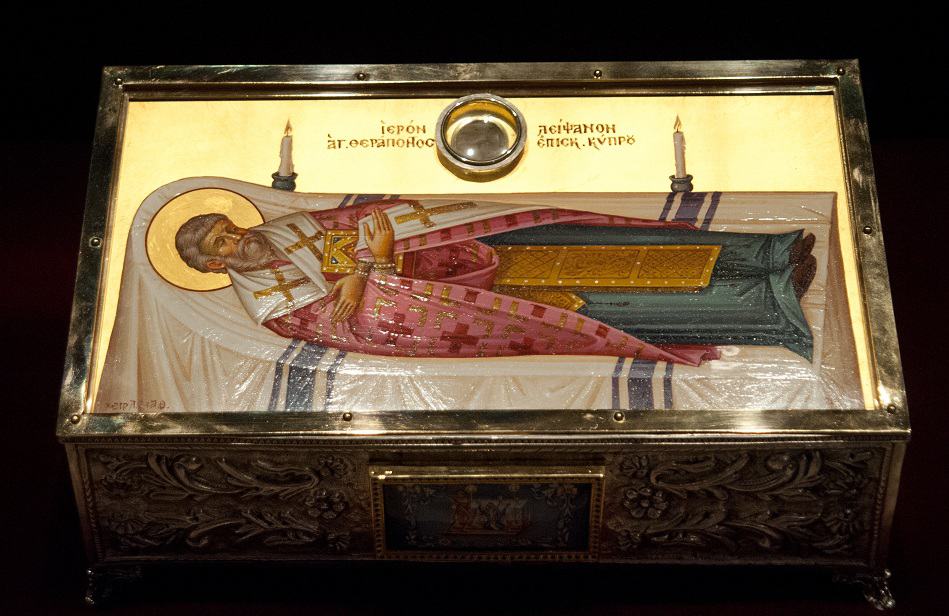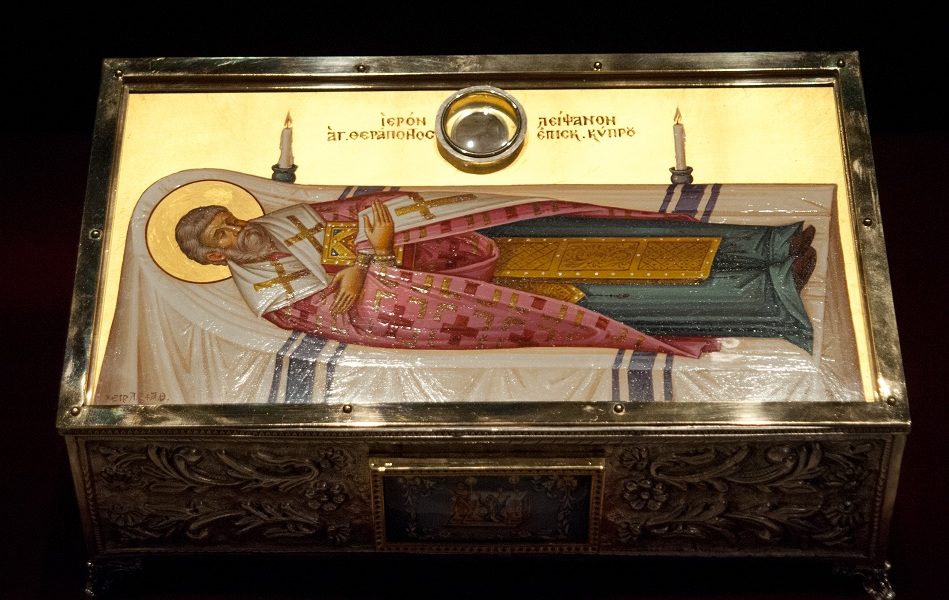On May 14, the Greek Orthodox Church commemorates the Feast Day of Martyrdom Therapon, who was a monk and ascetic on the island of Cyprus. He was worthy of episcopal rank and, during a persecution of Christians, was found worthy of a yet higher crown: that of martyrdom.

He brought many Greeks to the Christian faith and was cruelly persecuted by the pagans, being starved, imprisoned and flogged. They stripped him and threw him to the ground, bound him to four posts and beat him mercilessly, until they had stripped the flesh from his bones. However, the martyr still remained alive and the four dry posts became green and grew into tall trees from which many of the sick received healing. Finally, St Therapon was slain like a lamb and entered into the Kingdom, to behold the glory of God in eternity. He suffered with honour in the time of Valerian, in about 259.
His body at first rested in a church in Cyprus, but, during the reign of the Emperor Nicephorus, in 806, the Hagarenes fell upon Cyprus. Therapon appeared to the verger, told him that the infidel was about to attack Cyprus and ordered him to have his relics transferred to Constantinople. The verger saw to this at once. When the ship with the casket put to sea, a great storm arose, but the sea around the ship remained calm and a sweet perfume spread from the casket around the whole ship and the surrounding area. Then the verger opened it, and they saw that it was full of myrrh, which flowed from the saint’s relics. Many of the sick anointed themselves with this myrrh and were restored to health.

A church was built in Constantinople over the relics of the wonderworking saint, which continued to give healing to all who gathered around them with faith. The gravest diseases have been healed by St Therapon’s relics: paralysis, cancer, hemorrhage, insanity, blindness, tuberculosis and other illnesses.
We do not know much about the life of St Theapon. According to the witness of St Andrew Bishop of Crete, St Therapon lived prior to the seventh century. His was born in Anatolia, where monasticism flourished. He matured and drew close to God through the upbringing of his pious parents. His desire to be united with Christ directed him towards monasticism.
The rich talents of the monk Therapon became quickly recognized by the people. The local bishop of his province ordained him as his deacon and then later, priest. Sometime later, when the bishop fell asleep in the Lord, the clergy and laity elected St Therapon as their bishop. He fought against the heresy of iconoclasm and he suffered at the hands of the heretics who persecuted him and had him deposed. He travelled from place to place and everywhere he taught the Gospel, all the way to Jerusalem.
He had a great desire to venerate the All-Holy Tomb of Christ and the other holy places. There he performed many miracles and the people esteemed him as a Holy Miracle-worker even while he was still alive. He became well known by the people but he desired to flee from the attention they generated for him.
Afterward, he travelled to Cyprus and there he was received by the faithful with great joy. He resumed his work untiringly preaching the Christian Faith and ministering to the assuaging of human misery.
The pious faithful of Cyprus recognized his great skill and beseeched him to stay on the island. St Therapon, now an old man, touched by the requests of the faithful, agreed to be their bishop in the city of Larnaka. He made his home there and immediately commenced the task of teaching the Orthodox Faith. Meek and attentive was the unmercenary physician of Cyprus.
The remainder of his flock, giving glory to God, buried the Saint with great honor and respect. In the same place, they built a church after that first Arab conquest. When the invaders returned to invade the island a second time St Therapon appeared to a certain pious Christian and commanded him to transfer his relics to Constantinople. The pious Cypriot immediately obedient to the request secretly transferred the holy relics of the Saint onto a ship bound for the City, the other travellers unaware of their presence.
As the ship drew near to the City, a strong fragrance was noticed by all the travellers coming from the place of the relics. A guard ran to see what all the commotion was about. He cried out loudly, as the people rushed forth to see also, the sight of holy myrrh flowing from the relics of the Saint. They immediately gathered the myrrh in glass bottles.
The most popular Greek traditions of Easter and what they symbolise

